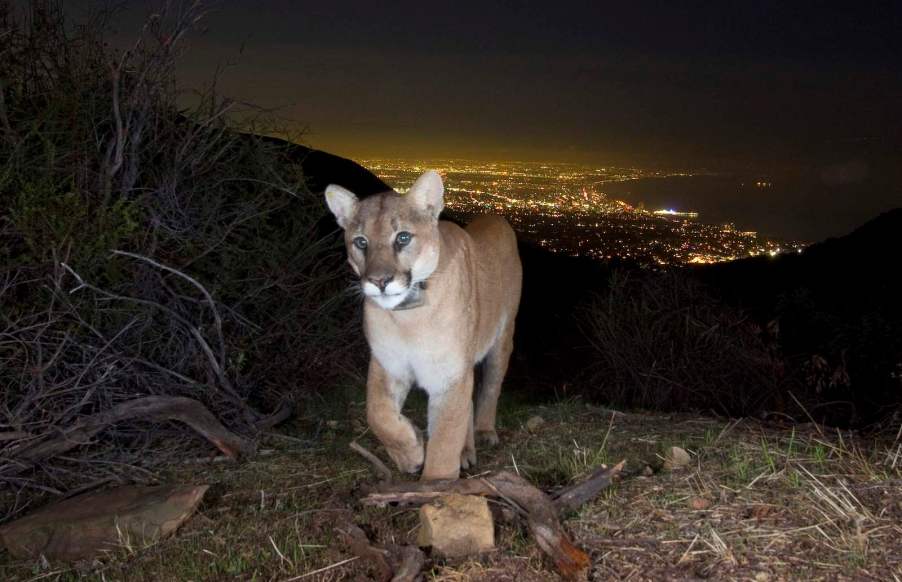
Mountain Lion’s Tragic Death Inspires World’s Largest Wildlife Bridge, Across 8 Lanes of California’s 101
P-22 had a short, tragic life. The mountain lion was born in California around 2010. He darted across at least two dangerous freeways and took up residence in Los Angeles’ Griffith Park. And while Los Angeles residents enjoyed conservationists’ updates on their local mountain lion, everyone knew the situation couldn’t last.
Conservationists called the cat a, “lonely, dateless bachelor, roaming the Hollywood Hills, and cut off from the rest of his kind.”
What cut P-22 off from California’s other mountain lions? The loud freeways, jammed with busy traffic at all hours of night and day. Mountain lions naturally range across 100 square miles in search of food and a mate. When that territory is compressed to a city park, they grow dangerously inbred. Or extinct altogether.

The National Park Service warns, “The genetic diversity of the Santa Monica Mountains [mountain lion] population is among the lowest ever documented for the species.” California’s mountain lions may thus, “vanish from the area within our lifetime.”
When P-22 got in a fight with two pet dogs, conservationists had to kill him. The necropsy was disturbing. The young mountain lion had a skull fracture and arthritis that pointed to being hit by at least one car. Inbreeding had caused other chronic health conditions such as kidney disease.
Californians rallied around a solution: the Wallis Annenberg Wildlife Crossing. Thousands donated to the proposed project, a green bridge across the eight-lane Highway 101. This bridge covered in native plants will connect the Santa Monica Mountains with the Simi Hills of the Santa Susana mountain range. The result will–hopefully–be larger territories for animals like P-22 who are no longer trapped in LA.

The project is off and running. Caltrans recently posted that it is closing the 101 at night to place the steel beams that will span this 210-foot gap. It is by far the largest of its kind. Anywhere in the world. If it works out, it may be the first of many.
Even if you aren’t worried about P-22, wildlife crossing bridges may go a long way to protect drivers. Vehicles collide with wildlife somewhere in the U.S. one million times annually. On average, these collisions lead 26,000 injured motorists, and 200 dead motorists every year.
Next, you can check out CalTrans construction of the wildlife bridge in the video below:



